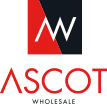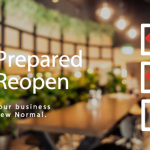

Checklist: What your food business needs to re-open during COVID-19
A comprehensive checklist to help your food business re-open safely during COVID-19 post-lockdown
To be confident that your food business can re-open safely after the period of closure, there are additional checks that you should do alongside your routine daily opening checks. It’s never been more important that basic hygiene standards are recognised and adhered to, and you need to recognise the areas where greater attention will be required.
Firstly, you should review your Food Management System to identify risks. This review and associated changes should be recorded in your Hazard Analysis Critical Control Point (HACCP) plan, or your safer food, better business pack (for our friends in Northern Ireland, it’s called Safe catering).
The review should consider any and all changes needed to your business’s processes and services as a result of the Coronavirus. For example, changes to production, workflow management, staffing, customer interactions and any required control measures.
The Food Standards Agency has produced a reopening checklist for food businesses during COVID-19, which you can view and download here.
Planning and preparation for start-up
Update your Local Authority of what you’re doing
The first thing you need to do is notify your Local Authority of your intention to restart operations. You also need to let them know of any changes to the business activities that you are registered for (for example the introduction of any new delivery or takeaway service).
Update your Food Safety Management System for any new procedures
You should consider if there are any new risks to food safety as a result of a change to procedures, and document them accordingly. Examples of new risks include:
• Anything in relation to takeaway or delivery services;
• allergen management;
• cook-chill-reheat;
• temperature control.
You should make sure that your food packaging for takeaways and delivery is food grade, and appropriate for the purpose and food type; we stock a wide range of packaging – get in touch to see how we can help with this. The packaging also needs to be stored hygienically – double check that the hygiene and integrity of any packaging stored through the closure has been maintained, and disposes of any packaging which is now unsuitable.
It’s important to ensure that staff are fit for work, and are wearing clean work clothes and any appropriate PPE. You may need to consider adjustments to fitness for work procedures to take account of COVID-19 symptoms. You might want to make telephone interviews with staff to help with your assessments.
There are two pieces of government advice that you should review at this point: government advice on use of Personal Protective Equipment (PE) outside of medical and care. And the Working safely during Coronavirus (COVID-19) which details further guidance for restaurants offering takeaway and delivery.
If your business does require staff to wear PPE, check you have adequate stocks – and replenish your supplies with our full range. You should also review any PPE laundering procedures where appropriate; to ensure PPE worn by staff can be safely changed and cleaned regularly. Any changes you make should be clearly communicated to staff and training needs to be provided where appropriate.
Check registered waste carrier services
You need to ensure that your registered waste carrier services are running and available as required, to make sure that there is no build-up of waste on site.
Site checks
Food prep areas
It’s vital that food preparation areas are clean and disinfected – including work surfaces, equipment and utensils. To safely achieve this, you should:
• Carry out a full site assessment to establish if you can undertake a thorough clean, or if a professional deep clean service is required;
• Source suitable cleaning and disinfection consumables and check that your existing stock is within their use-by dates.
• Any cleaning products that were made up or diluted before you closed should be disposed of, since their effectiveness will have reduced over time.
• Assess whether staff need re-training on dilution rates and cleaning procedures.
• Increase frequency of cleaning and disinfection, paying special attention to shared equipment and ‘pinch points’, where there is a high through-put.
Pest Activity
You must check that all areas are free from evidence of pest activity. Look for evidence of pests, and take any action if necessary before you restart operations. You should check for:
• Signs of damage or smearing to walls and doors
• Packaging which has been stained or chewed
• Footprints in dust
• Animal droppings or urine smell
• Insect bodies, cocoons and egg/pupal casing
• Feathers
Hand washing and cleaning materials
You should make sure that you have ample supplies of hand washing and cleaning materials. If you’re running low, view our range here. You also need to ensure that:
• All consumables are within dates for use
• You have suitable alternatives if your regular products are unavailable.
• Consider updating staff training in line with government advice that staff should wash their hands more frequently than usual.
• This should be for 20 seconds with warm water and soap.
Check your hot and cold running water
There should be hot and cold running water available at all sinks and hand wash basins. Make sure that adequate hand-washing stations are provided at all appropriate points within the food production and communal areas. Provide hand sanitiser as well as hand-washing facilities at appropriate locations.
Equipment Checks
Fridges, chilled display equipment and freezers
Check that all fridges, chilled display equipment, and freezers are working properly. To do this, you should:
• Thoroughly clean all equipment before restarting and restocking;
• Check their required temperatures and any temperature control records, if they were kept during closure period;
• Review whether equipment required maintenance after a period of inaction;
• Allow sufficient time for equipment to reach required temperature before restocking;
• Remove and refresh any ice left in machines and dispensers.
Ovens, Glass and Dishwashers
You should also review your other equipment, such as ovens, glasswashers and dishwashers. To do this, consider:
• Thoroughly cleaning all equipment before reopening;
• Inspecting them for maintenance requirements, verify temperatures and re-calibrate when necessary for time or temperature;
• Run dishwashers and glasswashers empty on hot cycle before use;
• Flush through taps and other equipment with water systems
• Consider Legionella risks and take action in line with Legionella guidance from the Health and Safety Executive to reduce risks;
• Check probe thermometers are working properly, and probe wipes are available
• See whether or not probe thermometers need to be recalibrated.
Ingredient and product checks
Check raw materials and ingredients
You should check the following for your raw materials and ingredients:
• Any damage to packaging which might affect safety of food or result in the loss of allergen information;
• Any evidence of temperature abuse which may make the food unsafe;
• The use-by and best before dates on existing stock. Make sure that storage has been in-line with the manufacturer’s • instructions. You could, for example, check that any opened or unsealed products have been stored in-line with labelled • instruction such as ‘once opened consume within’ labels;
• For foods you froze on closure, check that labelling and records are sufficient to allow the safe us of the food;
• The length of storage is in-line with your assessment at point of freezing;
• That you can obtain your usual raw materials and ingredients so that your product specifications can be met;
• That any new suppliers are reputable and can meet your requirements.
Check allergen information is accurate and available for all products
You should review your allergen management system, allergen matrices and menus to reflect any changes of supplier and any new raw materials or products that you’ve added. You should also review new takeaway or delivery services to ensure risk of allergen cross-contamination is managed.
Social Distancing Measures
Employee Safety
There are a series of steps you can take to make sure your employees are safe in their return to work. These include:
• Reviewing government advice on social distancing in the workplace in this guide;
• Provide – where possible – 2 metre social distancing;
• Considering steps to minimise staff-customer interactions;
• Considering how you will communicate with, update, and where needed train staff in new procedures;
• Identifying staff who are at higher risk;
• Produce working teams to lower staff mixing;
• Increasing ventilation.
Public safety
Refer to this guidance on social distancing, customer interaction and communication or instructions to the public.
We have a wide range of new social distancing signs avaliable to help with this.


Validate your login
Login
Create New Account